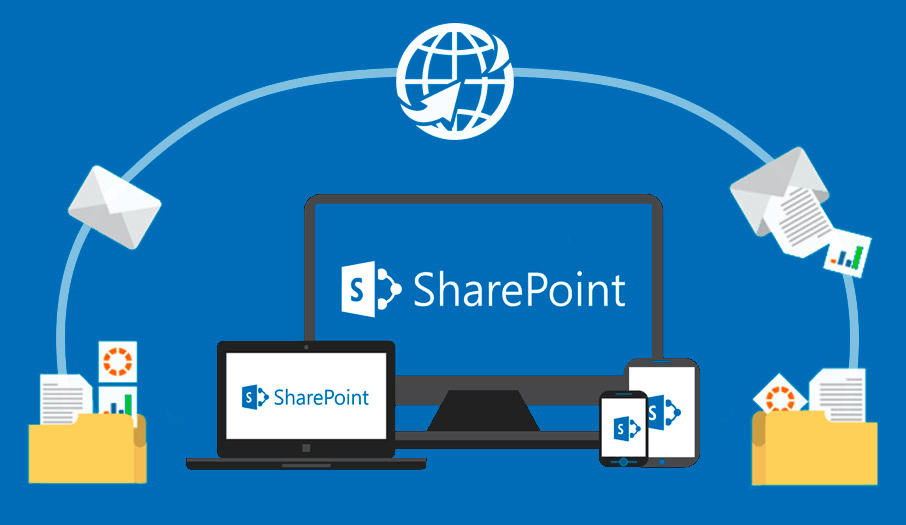Learn what to do when SharePoint storage is full and how to manage full SharePoint storage efficiently. This guide provides practical solutions and troubleshooting steps to keep your SharePoint system running smoothly, ensuring you can handle any storage issues effectively.

SharePoint is mainly used to support collaboration and division of labor between teams and enterprises. It integrates multi-party content, data and applications, allowing teams to easily exchange information and share documents, thereby accelerating the transfer of information, ideas and opinions and improving team collaboration efficiency. In addition, SharePoint is closely connected with the Office family of products, allowing users to create, edit, approve and manage a variety of documents, such as Access, Visio, InfoPath, Excel, Word and PPT, etc.
SharePoint's storage capacity is designed to handle large volumes of data, but it's essential to understand its limits to avoid performance issues. Each SharePoint plan comes with specific storage limits, and exceeding the limit may result in some problems. Thereby, knowing your storage quota and usage patterns can help you a lot in planning and managing your data effectively.

When SharePoint storage is full, it can lead to a variety of performance issues that can hinder productivity and disrupt normal operations. Below is a detailed list of the potential impacts:

Cannot Upload New Data: When storage is full, users may encounter errors or be unable to upload new documents. This can halt ongoing projects, as team members cannot share or update necessary files.
Sync Delays: SharePoint's collaboration features, such as co-authoring and real-time editing, may not function properly when storage is full. Users might experience sync issues, with changes not being saved or reflected in the destination path in real-time.
Failed to Save Files: Users may experience errors when trying to save files, which can lead to data loss. This is particularly critical for important documents that are frequently updated.
Decline in System Responsiveness: Overall system responsiveness can decline, affecting the speed and efficiency of various SharePoint operations. Users might notice delays when navigating between sites, opening files, or performing searches.

Increased Risk of Data Loss: With storage at capacity, there is an increased risk of data corruption or loss. Backups and data recovery processes may be compromised, making it difficult to restore lost information.
When you encounter full storage, the first step is to identify and delete unnecessary files. Start by clearing the recycle bin, as it occupies storage space until permanently emptied. Review large libraries and lists, and delete obsolete versions or unused files, and more. Detailed steps can be found in the following section.
Check all data in your SharePoint environment to identify files that you don't need any longer, and remove them completely. By decluttering your SharePoint, you can significantly free up much precious storage space.
If you have stored many high-resolution images, videos or other types of large files that may consume a substantial amount of storage, you can try compressing these files without compromising quality. That can help reduce their size and free up space of the SharePoint storage.
Offload personal files and documents to OneDrive for Business. This cloud storage solution is designed for individual user storage and can help alleviate the strain on SharePoint storage. By moving personal files to OneDrive from SharePoint, you can optimize SharePoint for team collaboration and shared content.
To complete SharePoint to OneDrive (for Business) transfer, you can consider using MultCloud, which aims to help you manage different cloud drives together, avoiding the complex process of swicthing accounts of various clouds. Under the help of this multiple cloud manager, you can download, upload, rename, share files in cloud drive as you do in the cloud official site. What's more, you can directly migrate or sync data across cloud drives online, rather than downloading and re-uploading them manually.
Establish clear retention policies for different types of content within SharePoint. This involves defining how long documents should be kept before being deleted or archived. Implementing retention policies helps manage storage space effectively and ensures compliance with organizational requirements.
Additionally, you can move files that are less frequently accessed or important to your local drive or external hard drive. By moving these files to external storage, you can free up valuable SharePoint space for active and crucial content.
So, when your SharePoint storage is full, you can do as the above to free up the space. To prevent the similar storage issues in the future, you can seting storage quotas for sites and libraries, store only essential files and use version control wisely, periodically clean up the unnecessary files, and keep a close eye on storage trends.